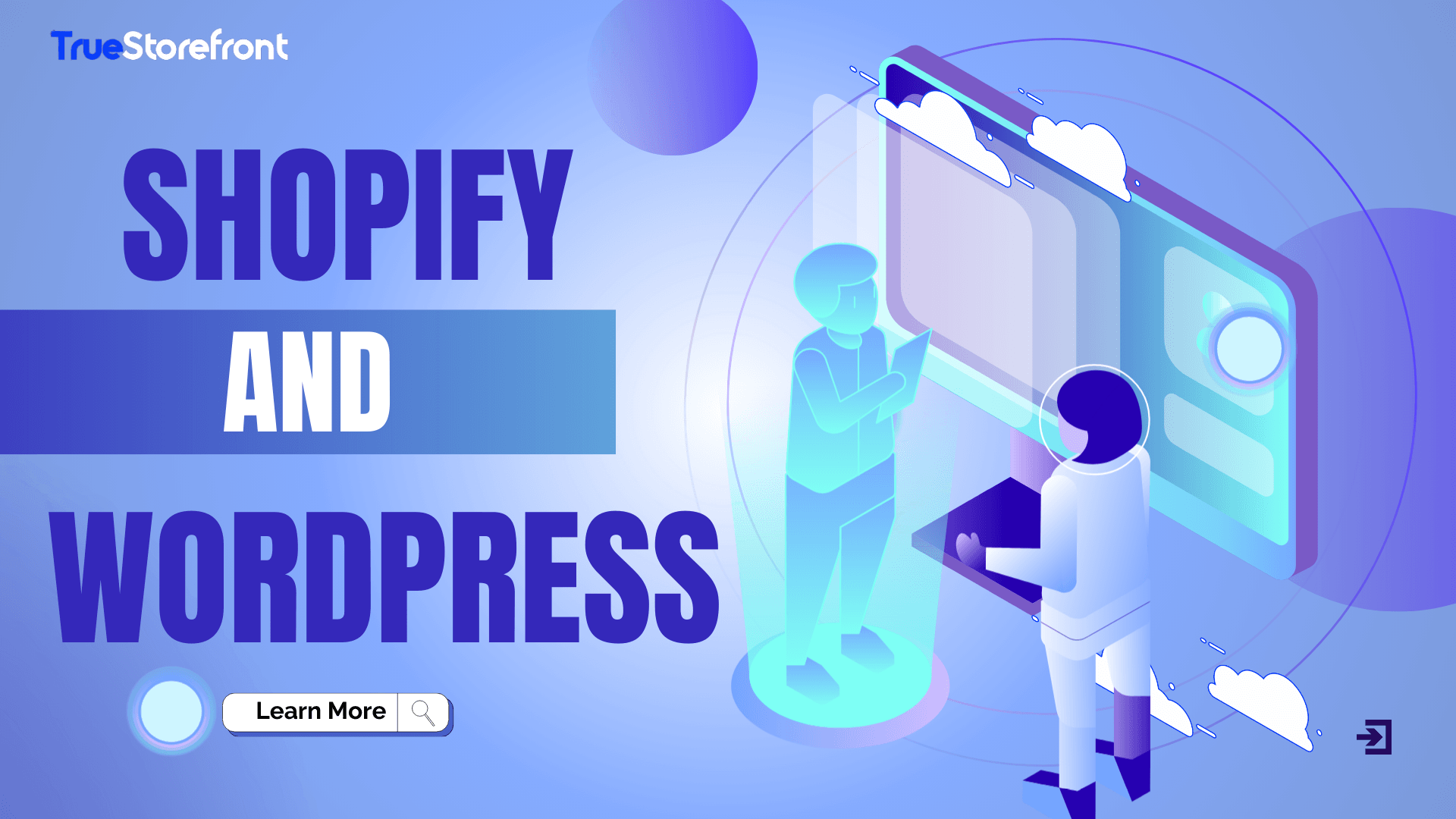When venturing into the world of e-commerce, one of the most critical decisions you'll make is choosing the right platform for your online store. Two of the most popular options available today are Shopify and WordPress. Each platform has its own set of features, benefits, and limitations. In this blog post, we'll dive deep into Shopify and WordPress, comparing their strengths and helping you decide which one is best suited for your business needs.
I. Overview of Shopify
Shopify is a dedicated e-commerce platform that allows you to create, manage, and grow your online store with ease. It offers a comprehensive suite of tools designed specifically for e-commerce, making it a popular choice for both beginners and experienced merchants.
1.1. Key features
-
Ease of Use: Intuitive interface designed for users without technical expertise.
-
Design and Themes: Extensive library of customizable, professional themes.
-
Payment Processing: Integrated with numerous payment gateways, including Shopify Payments.
-
App Store: Access to thousands of apps for additional functionalities.
-
Security and Hosting: Managed hosting and security, ensuring fast, secure, and PCI-compliant stores.
1.2. Main Pros and Cons
1.3. Who is best for?
-
Beginners: Those who want a hassle-free setup and management experience.
-
SMEs: Ideal for those who need an all-in-one e-commerce solution.
-
Merchants prioritizing Ease of Use: Businesses that prefer a platform with minimal technical overhead.
-
Growing Businesses: Companies looking for scalability with managed hosting and support.
Read more: Everything you need to know about shopify hydrogen
II. Overview of WordPress
WordPress, on the other hand, is a versatile content management system (CMS) that powers over 40% of all websites on the internet. While it wasn't initially designed for e-commerce, its flexibility and the availability of plugins like WooCommerce have made it a popular choice for online stores.
2.1. Key features
-
Flexibility and customization: Unmatched ability to create any type of website with thousands of themes and plugins.
-
Content management: Robust CMS capabilities for managing diverse content types.
-
SEO capabilities: Superior SEO features with plugins like Yoast SEO.
-
WooCommerce integration: Comprehensive e-commerce plugin that adds full online store functionality.
-
Community and support: Large, active community offering extensive resources and support.
2.2. Main Pros and Cons
2.3. Who is best for ?
-
Experienced users: Those with some technical knowledge or willingness to learn.
-
Custom website needs: Businesses requiring highly customizable and unique website functionalities.
-
Content-heavy sites: Ideal for sites with a strong focus on blogging or diverse content types.
-
SEO-focused businesses: Companies that need advanced SEO capabilities.
-
Budget-conscious entrepreneurs: Those looking for a cost-effective solution with the ability to scale as needed.
III. Comparing Shopify and WordPress
Go throught the detailed comparison between Shopify and Wordpress to find the best fit for your project.
Ease of use
- Shopify:
Shopify is renowned for its ease of use making it a top choice for users with minimal technical skills. Its interface is visually intuitive, guiding users through the setup process with clear instructions and drag- and-drop features.
This streamlined approach simplifies the creation and management of an online store, making it accessible even for those with no coding knowledge. However, this simplicity comes with trade-offs, as some advanced features and customization options may be limited.
- WordPress:
WordPress is highly user-friendly for cheating traditional websites but can be more complex for e-commerce when setting up e-commerce stores. To enable e-Commerce functionality, you typically need to install and configure the WooCommerce plugin.
While WooCommerce is user-friendly and integrates well with WordPress, it requires a bit more technical expertise compared to shopify. The extensive customization options available inWordPress can be both a strength and a challenge, especially for beginners who might find the learning.
Setting up an online store typically requires the WooCommerce plugin, which, while user-friendly, demands more technical expertise than Shopify. The extensive customization options available in WordPress can be both strength and a challenge, especially for beginners who might find the learning curve steep.
3.2. Customization and flexibility
- Shopify:
Shopify Offers a range of professionally designed themes and a robust app ecosystem that allows for various customizations. While it provides options to tweak the design and add functionalities, there are limits compared to WordPress.
Advanced customizations, such as modifying the underlying code or integrating bespoke features, may be restricted or require additional technical expertise. Shopify’s focus on ease of use means that while it handles most needs well, it may not offer the same level of deep customization that some users might want.
- WordPress:
WordPress eccles in customization and flexibility. It provides access to thousands of themes and plugins, allowing you to create a highly tailored website that fits specific needs. Whether you want a unique design, custom functionalities, or integration with various third-party services, WordPress can accommodate these requirements.
However, this high degree of flexibility can lead to complexity. Users need to invest time in learning how to configure and maintain an be overwhelming for beginners or those without expertise.
3.3. SEO and marketing
- Shopify:
Shopify includes essential SEO features and tools that help improve the visibility of your online store. It offers built-in SEO settings such as meta tags and alt text for images. Additionally, Shopify app store has several SEO and marketing apps that can extend its capabilities. While these features are sufficient for most users, Shopify may not provide as such granular control over advanced SEO aspects compared to WordPress.
- WordPress:
WordPress is renowned for its strong SEO capabilities, particularly when used with plugins like Yoast SEO or All in One SEO Pack. These plugins offer in-depth control over SEO settings, allowing users to optimize their site extensively for search engines. WordPress also provides a wide range of marketing tools and plugins that facilitate email marketing, social media integration, and more. The platform's flexibility in SEO and marketing makes it a powerful choice for users who need advanced optimization features.
3.4. E-commerce features
- Shopify:
Shopify is purpose-built for e-commerce and offers a comprehensive set of features out-of-the-box. This includes integrated payment processing, inventory management, order tracking, and shipping integrations.
Shopify’s platform is designed to handle the complexities of online selling, making it a robust solution for managing an online store. It supports a wide range of payment gateways and shipping options, providing a seamless experience for both merchants and customers.
- WordPress:
To enable e-commerce on WordPress, you need the WooCommerce plugin, which adds extensive e-commerce functionality to the platform. WooCommerce supports various payment gateways, shipping methods, and product management features. However, to achieve the same level of out-of-the-box functionality as Shopify, you may need to install additional plugins and configure settings. While WooCommerce is highly customizable, this can require extra time and effort to set up and maintain.
3.5. Ownership and control
- Shopify:
As a hosted platform, Shopify offers a streamlined and managed environment. However, this means that you have less control over the technical aspects of your website. Your data is hosted on Shopify’s servers, and you are subject to their terms of service and limitations. While Shopify handles security, updates, and maintenance, you are dependent on their infrastructure and policies.
- WordPress:
WordPress is a self-hosted platform, giving you full ownership and control over your website and data. You choose your own hosting provider, manage your backups, and have the freedom to configure security settings as you see fit. This level of control allows for greater customization and flexibility but also means you are responsible for maintaining your site’s security, performance, and compliance with regulations.
3.6. So, which platform should you choose?
You’ll love Shopify if:
-
You want a quick, easy-to-use solution with minimal setup.
-
You prefer an all-in-one platform that handles hosting, security, and updates.
-
You don't need extensive customization beyond what's available in the Shopify App Store.
Wordpress is more suitable for you if:
-
You need maximum flexibility and customization options.
-
You're comfortable with a steeper learning - curve and potentially managing more technical aspects.
-
You plan to create a content-rich site with a strong focus on SEO.
IV. What if you integrate Shopify with WordPress?
Still don't know which one is the best choice for your online business, what's about the combination of 2 top-notch platforms? Let's explore further.
4.1. What is Shopify WordPress integration ?
Shopify WordPress integration allows you to use Shopify’s robust-ecommerce platform within your WordPress website. This integration combines the strengths of both platforms: Shopify's easy-to-use online store capabilities and WordPress's powerful content management system. By embedding Shopify’s Buy Buttons into WordPress, you can sell products directly from your WordPress site while managing everything through Shopify.
4.2. How does Shopify work with WordPress?
When integrated, Shopify and WordPress work together through Shopify’s Buy or plugin designed for this purpose. Here’s how it works:
-
Shopify Setup: You manage your product catalog, inventory, and payment processing in Shopify.
-
WordPress Setup: You Use Wordpress to create and manage your website’s content, blog posts, and pages.
-
Integration Point: By using the Shopify Buy Button plugin or Embedding Shopify’s product widgets, you can display and sell your Shopify’s product directly on your Wordpress site.
4.3. The benefits of Shopify WordPress integration
Integrating Shopify with WordPress is beneficial for those who want to leverage the advanced blogging and content management features of WordPress while using Shopify’s seamless e-commerce functionalities. It provides a cohesive user experience, allowing site owners to maintain their WordPress site for content and SEO purposes, while utilizing Shopify for managing products, orders, and payments:
-
Unified Platform: Combines Shopify’s ecommerce capabilities with WordPress’s content management.
-
Ease of Use: Simplifies the process of adding e-commerce to a WordPress site without needing extensive technical knowledge.
-
Flexibility: Offers extensive customization options for both your website content and online store.
-
SEO and Content Management: Leverage WordPress’s powerful SEO tools and content management features to enhance your site’s visibility and user engagement.
-
Robust E-commerce: Benefit from Shopify’s secure, scalable, and user-friendly e-commerce solutions.
V. How to integrate Shopify with WordPress?
Step 1: Set up your WordPress website
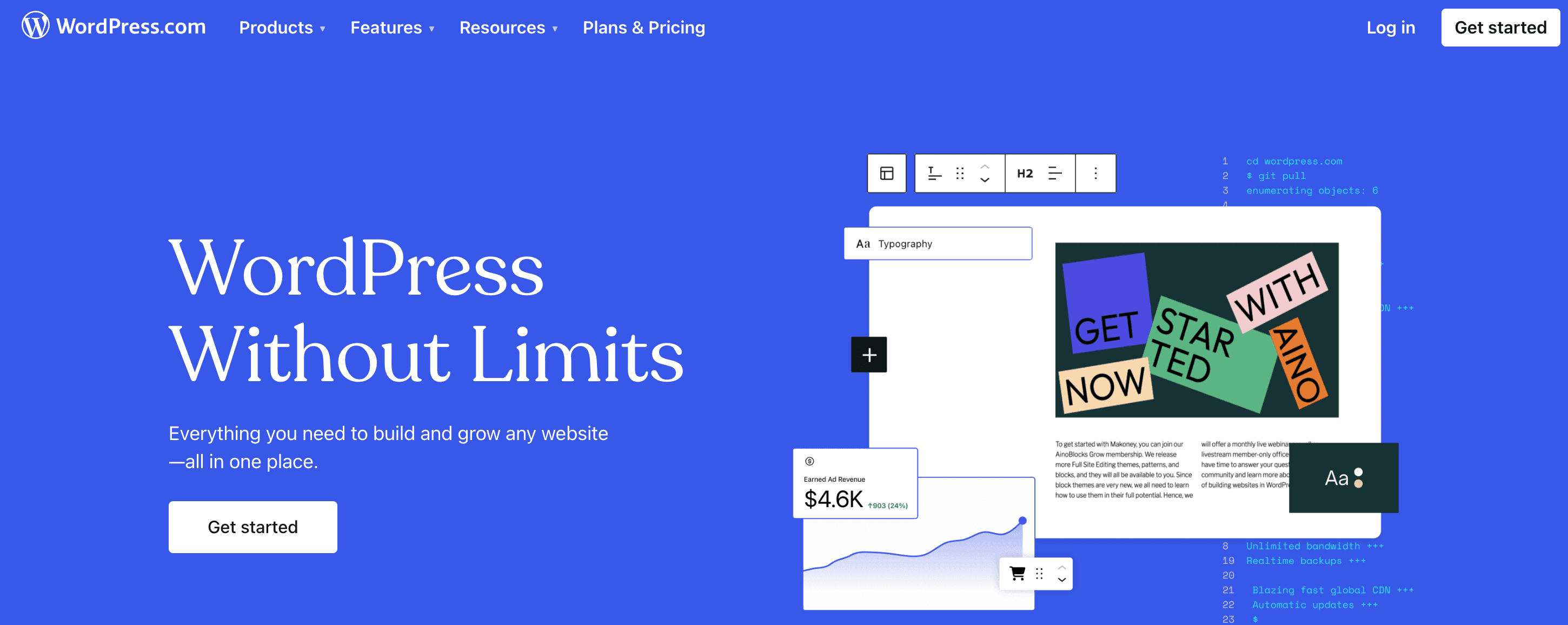
-
Choose a Hosting Provider: Select a reliable hosting provider and install WordPress.
-
Install a Theme: Choose and install a WordPress theme that suits your brand.
Step 2: Set up your Shopify store

-
Sign Up for Shopify: Create a Shopify account and set up your store.
-
Configure Store Settings: Set up payment gateways, shipping options, and taxes.
-
Add Products: Add your products, complete with descriptions, prices, and image
Step 3: Add Shopify poducts to your WordPress site
-
Go to the Buy Button channel page in the Shopify App Store
-
Click the Install button to install it on your store:
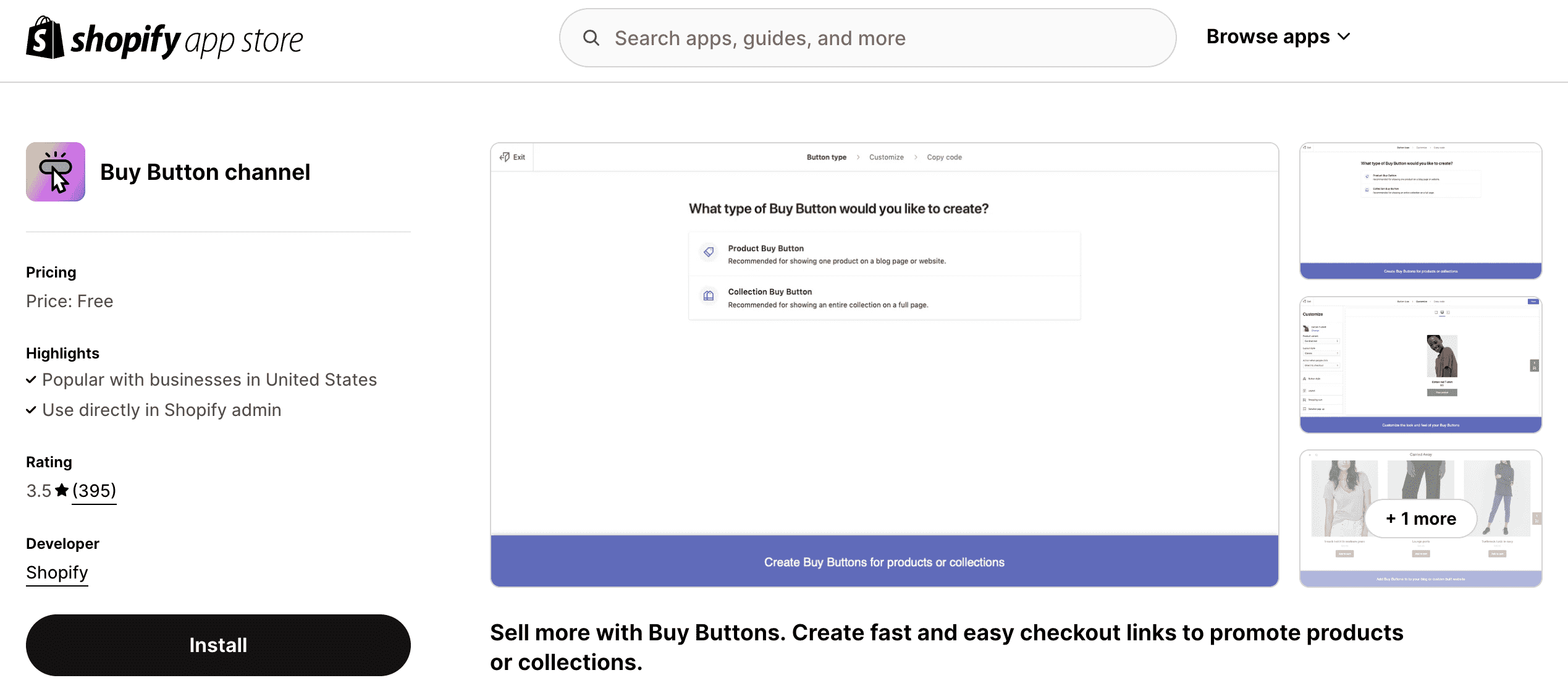
- Create Buy Buttons: In your Shopify admin panel, go to the Buy Button sales channel and create Buy Buttons for the products or collections you want to display on our WordPress site.
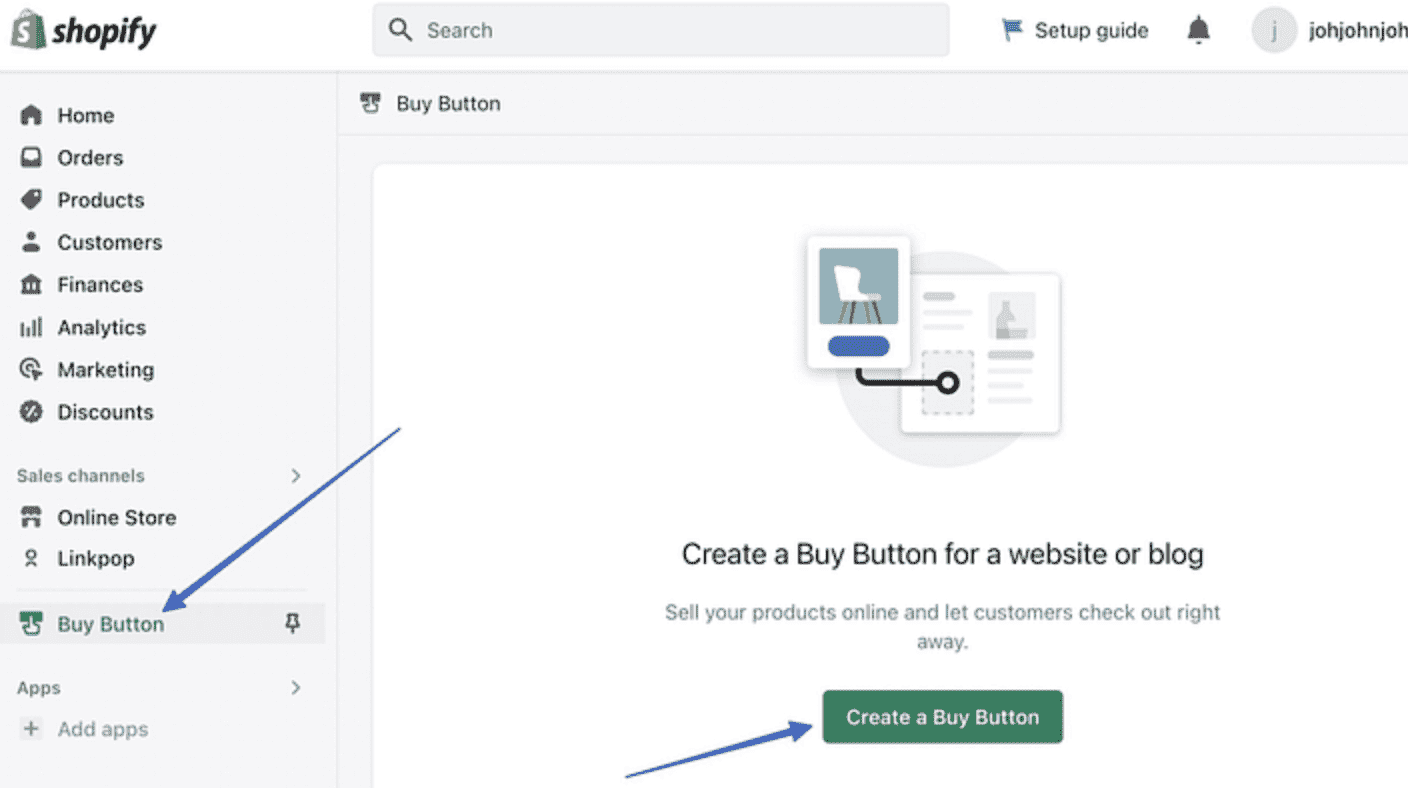
- Choose the type of Buy Button you want to create. For an array of products, choose the Collection option. For just one product, choose the Product option.
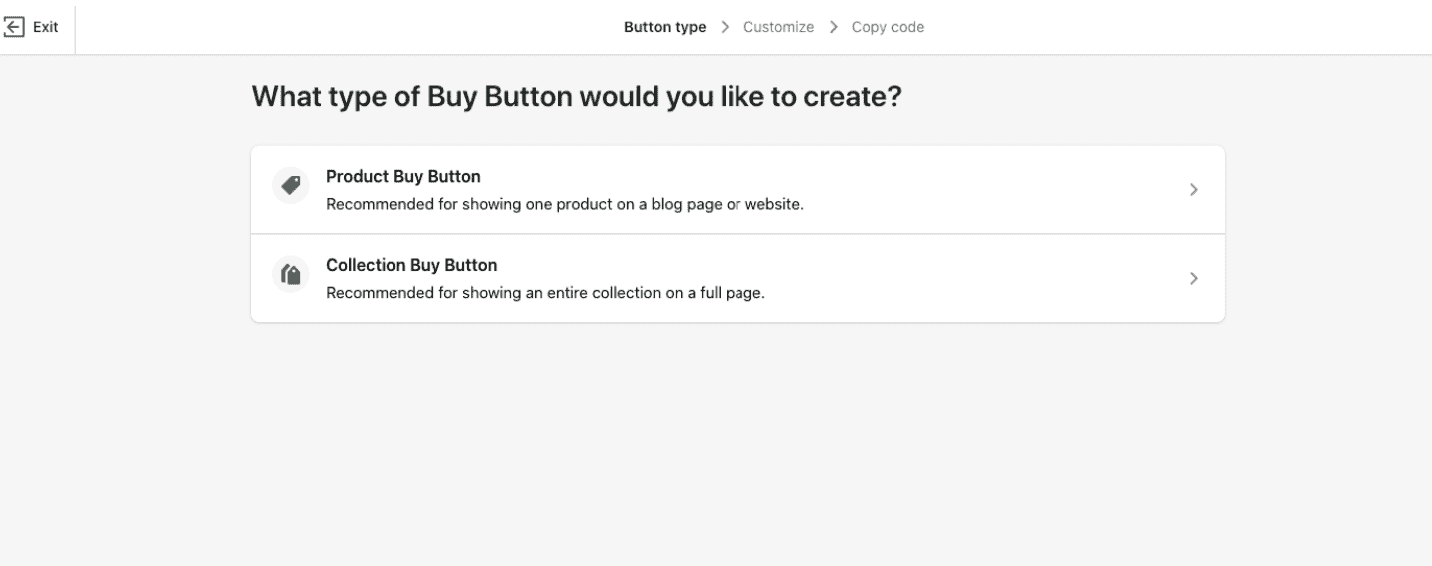
- Select the product or products you want to include. Here you can customize the buy button and product display style. Once you are done, click on next from the top right corner.
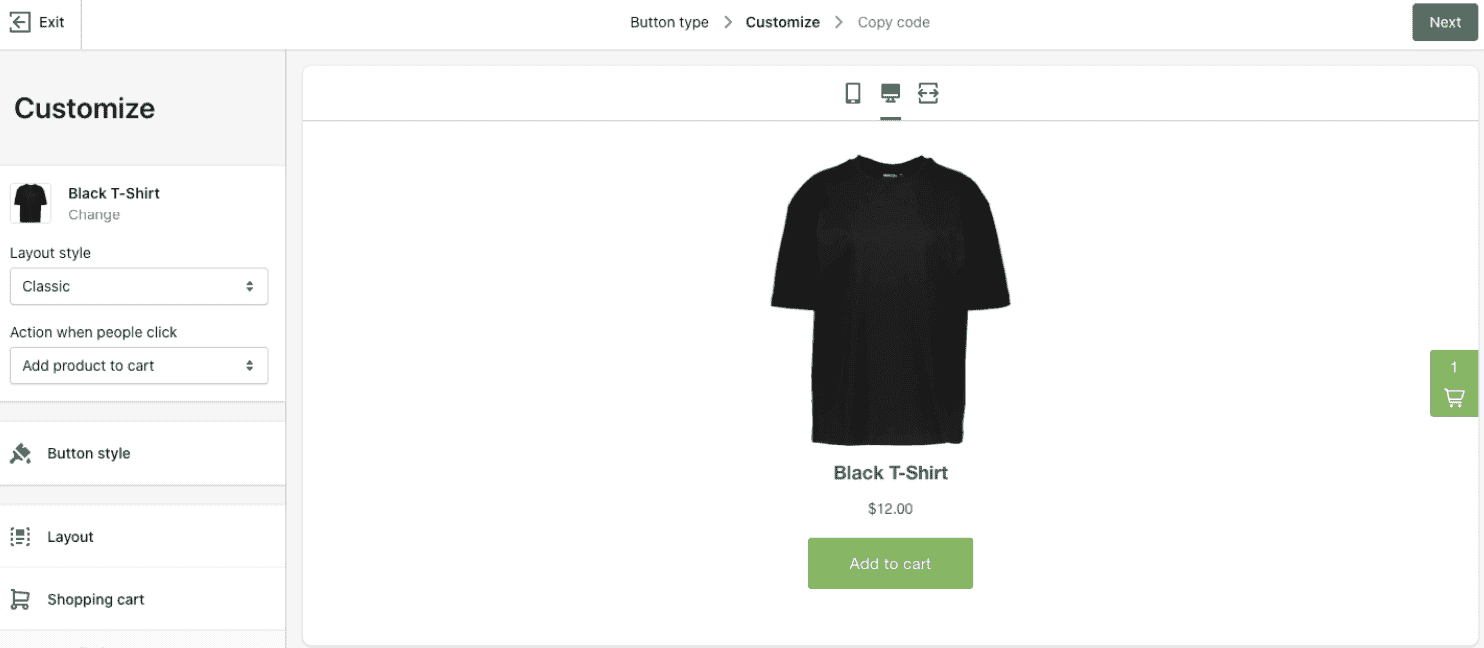
- Next, copy your HTML code**: Copy the code from the next page to paste on your WordPress site.
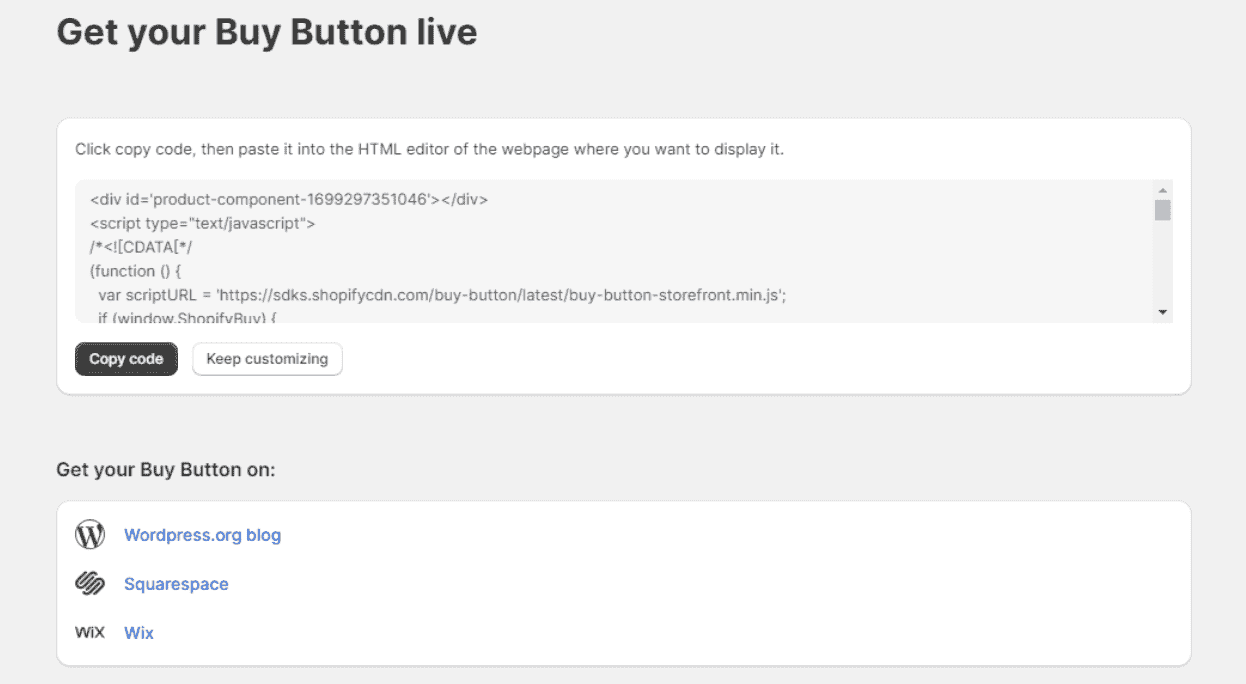
Step 4: Add Shopify Buy button to your WordPress site
-
After you have copied the code snippet of the button, you are ready to add it to a page on your WordPress site. For that, log in to your WordPress admin panel.
-
Navigate to Pages > All Pages.
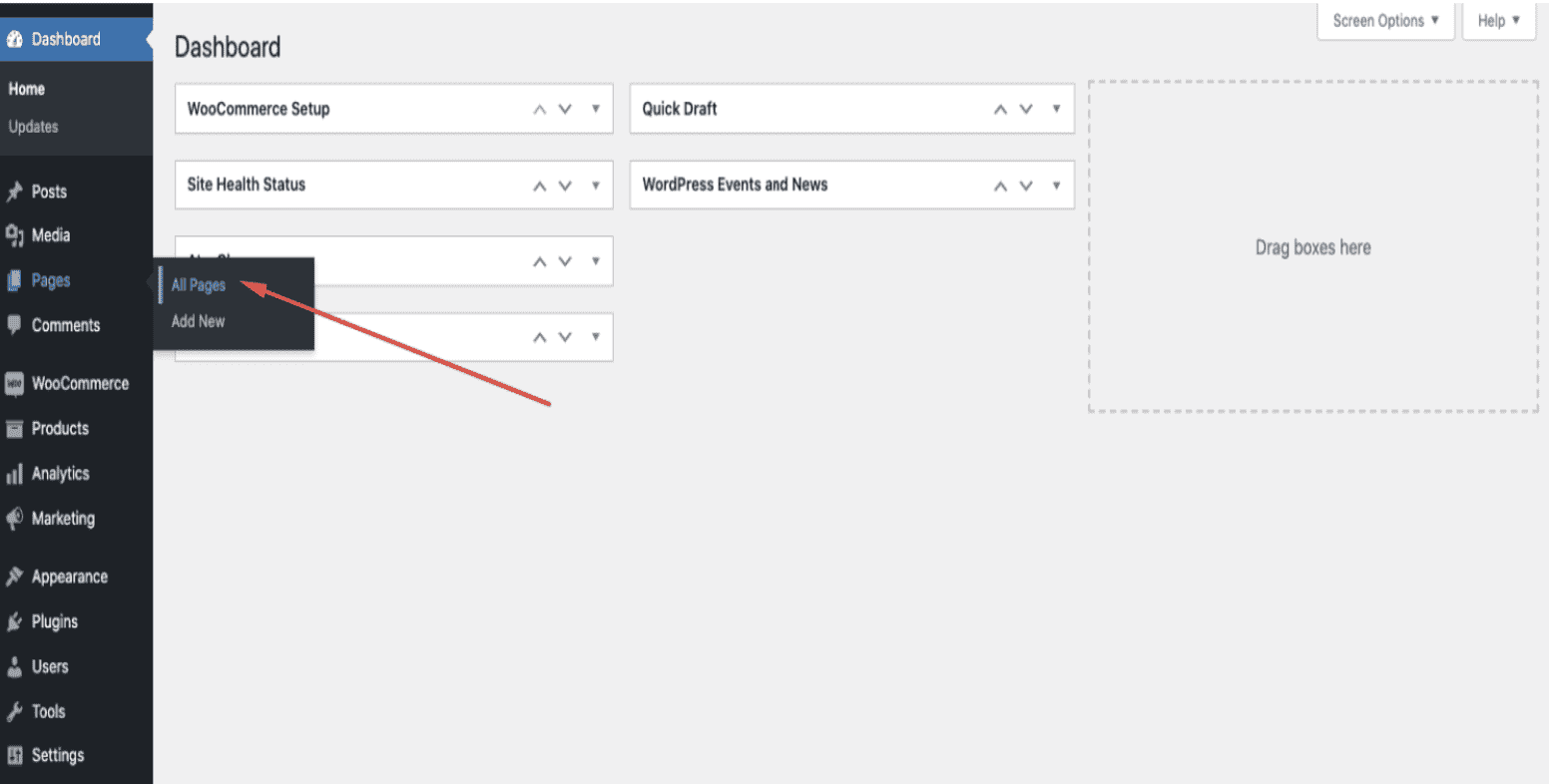
- On the page or post, add in a new Custom HTML block. You can do this by clicking the + sign and then searching for Custom HTML

- You have successfully displayed the products on your WordPress site. Users who visit your site just have to hit Add to Cart and they’ll enjoy an integrated checkout right from your WordPress site - no redirects required.

Step 5: Customize the integration
-
Customize Buy button appearance: Shopify allows you to customize the appearance of Buy Buttons to match your WordPress site's design. Adjust the button style, colors, and layout as needed.
-
Use shortcodes (optional): Some WordPress themes and plugins support shortcodes for easier embedding. Check if your theme supports shortcodes and use them to embed Buy Buttons more seamlessly.
Step 6: Optimize for SEO and Performance**
-
SEO Optimization: Ensure your WordPress site and Shopify products are optimized for search engines. Use SEO plugins like Yoast SEO for WordPress and optimize product descriptions, titles, and images in Shopify.
-
Performance Optimization: Make sure your WordPress site loads quickly. Use caching plugins, optimize images, and consider using a CDN (Content Delivery Network) to improve site speed.
VI. FAQ
6.1. Can I use Shopify with WordPress for free?
While WordPress itself is free, Shopify requires a subscription. The Shopify Buy button can be added to any WordPress site, but you'll need at least the Shopify Lite plan, which starts at $9 per month.
6.2. How do I add Shopify products to my WordPress site?
You can add Shopify products to your WordPress site using the Shopify Buy Button. After creating a Buy Button in Shopify, you'll get an embed code that you can paste into any WordPress post or page.
6.3. Is Shopify better than WooCommerce for WordPress?
It depends on your needs. Shopify is easier to use and offers a fully hosted solution with integrated support, while WooCommerce provides more flexibility and customization but requires more technical knowledge and self-hosting.
6.4. How do I manage orders if I use Shopify with WordPress?
All orders placed through the Shopify Buy Button on your WordPress site are managed in the Shopify admin dashboard, where you can handle order fulfillment, inventory, and customer communication.
VII. Final thoughts
Whether you choose Shopify or WordPress, each platform offers the tools and features necessary to build a successful online store. Evaluate your needs, weigh the pros and cons, and select the platform that aligns best with your vision for your e-commerce business. With the right choice, you'll be well on your way to creating a thriving online presence.
